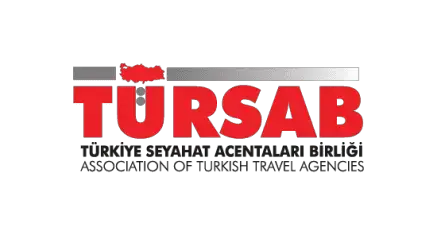Understanding and Dealing with an Early Receding Hairline
Last edited, 12 March 2024
Observing a receding hairline at an early age may appear unusual, but it’s not an exceedingly rare occurrence. The American Hair Loss Association highlights that approximately 25% of men grappling with male pattern baldness may witness the onset of hairline recession by the time they reach 21 years old.
For many individuals, the realization of an early receding hairline can be a profound and emotional experience. The gradual retreat of the hairline can lead to a range of emotions, from self-consciousness to anxiety about societal perceptions.
The first step in navigating the challenges of an early receding hairline is to understanding the causes. In this post, I will delve into recognizing the signs, coping strategies, and existing solutions to the problem.
Table of Contents
Understanding the Causes of Early Receding Hairline
When it comes to hair loss, genetics often play a significant role. Family history can serve as a predictor for an early receding hairline, with certain genes predisposing individuals to this natural progression. Understanding the genetic component helps individuals contextualize their experience and approach it with a more informed perspective.
Hormonal fluctuations, particularly changes in dihydrotestosterone (DHT) levels, can contribute to the onset of a receding hairline. DHT, a hormone derived from testosterone, can affect hair follicles, leading to miniaturization and eventual hair loss. Exploring these hormonal intricacies sheds light on the underlying causes and potential preventive measures, such as reducing DHT with Saw Palmetto.
Beyond genetic and hormonal influences, lifestyle choices, stress, and environmental factors also contribute to hair health. Poor nutrition, high stress levels, and exposure to pollutants can accelerate hair loss. Recognizing the impact of these external factors empowers individuals to make positive lifestyle changes that can mitigate the progression of a receding hairline.
Recognizing the Signs of Early Receding Hairline
The subtle changes associated with an early receding hairline are often visual cues that may include a higher hairline, particularly around the temples. Thinning of the hair in these areas becomes noticeable, marking the initial stages of hairline recession. It’s important for individuals to be attentive to these physical signs, as early recognition can pave the way for proactive coping strategies.

Beyond the physical changes, the emotional toll of experiencing a receding hairline at a young age is profound. Feelings of self-consciousness, anxiety, and diminished self-esteem are common reactions. It’s crucial to acknowledge and address the psychological impact, recognizing that emotional well-being is an integral part of the journey towards self-acceptance.
As societal standards often perpetuate an idealized image of thick, luscious hair, individuals grappling with a receding hairline may find themselves contending with societal expectations. This emotional journey is unique to each person, but acknowledging and expressing these feelings is an important step toward personal growth.
Hi! I’m Helene, your expert in beauty and hair health.
Feel free to connect with one of IdealofMeD’s specialists today! Don’t hesitate to reach out if you have any questions regarding our products, if you would like a free consultation, or would like to book a hair transplant in Turkey. We’re here to support on your journey to healthier, more vibrant hair!
- we are online
A Receding Hairline at 20: Is It Normal?
Noticing a receding hairline at the age of 20 might seem uncommon, but it’s not rare either. The American Hair Loss Association notes that around 25% of men experiencing male pattern baldness may begin to see their hairline recede by the age of 21.
If there’s a family history of baldness, especially on your father’s or either grandparent’s side, you might be at a higher risk of encountering early hair loss. Genetic factors significantly influence the timing and extent of a receding hairline.
While it’s more prevalent in men, a receding hairline can also affect young women, albeit less frequently. Frontal fibrosing alopecia, the primary cause of hairline recession in women, typically occurs post-menopause. However, instances of frontal fibrosing alopecia have been reported in women as young as 21 . Additionally, female pattern hair loss may impact about 3% of women in their 20s.
Understanding that genetic predisposition and hormonal factors contribute to the variability in hairline patterns among individuals can provide context for those facing these changes at a young age. Seeking professional guidance and support becomes essential in navigating this aspect of personal well-being. In the following section, we’ll explore the significance of seeking support and share insights on coping strategies.
Multivitamins, the Ideal Solution For Those Suffering From Hair Loss
If you’re suffering from hair loss I recommend simplifying your routine by ditching multiple pills. Our all-in-one hair vitamins, combines everything your hair needs for optimal health.
These tried-and-tested vitamins have shown fantastic results, speaking volumes about their effectiveness.
Early Receding Hairline: Seeking Support and Coping Strategies
Understanding that an early receding hairline is not an isolated experience but rather a shared journey among many individuals, seeking support becomes a valuable step in navigating this phase.
- Emotional Support: Sharing your concerns and feelings with friends, family, or a support network can be cathartic. Many people face similar challenges, and opening up about your experiences fosters understanding and empathy. Recognize that societal expectations surrounding appearance are evolving, and there is strength in embracing authenticity.
- Professional Guidance: Consulting with healthcare professionals or dermatologists can provide valuable insights into the specific factors contributing to a receding hairline. They can assess your situation, rule out underlying medical conditions, and offer guidance on potential interventions or lifestyle adjustments.
- Coping Strategies: Coping with a receding hairline involves a combination of self-care and adopting a positive mindset. Embrace hairstyles that complement your features and consult with a stylist for personalized recommendations. Establishing a consistent hair care routine with products aimed at promoting hair health can also contribute to a more vibrant appearance.
- Community Connections: Joining online communities or support groups dedicated to individuals experiencing hair loss can offer a sense of camaraderie. Sharing experiences, tips, and success stories within these communities creates a supportive environment, assuring individuals that they are not alone in their journey.
Signs and Symptoms of Early Onset Hair Loss in Men
Recognizing the signs and symptoms of early onset hair loss is crucial for proactive management and intervention. While variations exist among individuals, several common indicators may suggest the onset of hair loss, particularly in men.
One of the primary signs is the gradual recession of the hairline, typically starting at the temples. The hairline may form a distinct “M” shape as the hair thins in these areas. Paying attention to changes in the shape and position of the hairline can help identify early signs.
Thinning at the Crown
Men experiencing early onset hair loss often notice thinning at the crown of the head. Hair density decreases, and the scalp becomes more visible. Monitoring changes in the thickness and texture of hair at the crown is essential for early detection.
Increased Shedding
An uptick in daily hair shedding, noticeable during activities like washing or combing, may indicate the beginning stages of hair loss. While shedding is a natural part of the hair growth cycle, a significant increase could be a signal of impending hair loss.
Changes in Hair Texture
The texture of the hair may undergo alterations, becoming finer and less robust. Observing changes in the thickness and diameter of individual strands can provide insight into the progression of hair loss.
Formation of Bald Spots
Early onset hair loss may lead to the formation of small bald spots, especially around the crown or temples. These patches may gradually expand over time. Regularly inspecting the scalp for the development of bald spots can aid in early detection.
Itching or Irritation
Scalp discomfort, itching, or irritation may accompany early hair loss. These symptoms can be indicative of underlying issues affecting hair health. Monitoring any changes in scalp condition is essential for a comprehensive assessment.
Family History
Genetic predisposition plays a significant role in early onset hair loss. If there’s a family history of male pattern baldness, individuals may be more susceptible to experiencing similar patterns. Being aware of family hair loss patterns can help anticipate and manage early symptoms.
Psychological Impact
Beyond the physical signs, emotional changes such as increased self-consciousness or a decrease in self-esteem may accompany early hair loss. Recognizing the psychological impact is integral for addressing the holistic well-being of individuals experiencing these symptoms.
Understanding these signs and symptoms empowers individuals to take proactive steps, whether through lifestyle adjustments, medical interventions, or seeking emotional support. Early detection and a comprehensive approach to hair health can significantly influence the management and perception of early onset hair loss in men.

Can One regrow hair after early onset hair loss?
The ability to regrow hair after early onset hair loss can depend on various factors, including the underlying cause of the hair loss, genetics, and the timeliness of intervention. Here are some considerations:
Cause of Hair Loss: Identifying the specific cause of early onset hair loss is crucial. Common causes include genetic factors, hormonal imbalances, stress, and certain medical conditions. For example, male pattern baldness is often hereditary, and while it may be challenging to fully reverse, there are treatments that can help slow down the progression.
Treatment Options: Several medical interventions and treatments are available to address early onset hair loss. These may include medications like minoxidil and finasteride, which can promote hair regrowth and slow down further loss. However, the effectiveness of these treatments varies among individuals, and results are not guaranteed.
Lifestyle Changes: Adopting a healthy lifestyle can contribute to overall hair health. Proper nutrition, regular exercise, and stress management play roles in maintaining a healthy scalp and supporting hair growth. While lifestyle changes alone may not fully reverse significant hair loss, they can complement other treatment approaches.
Professional Guidance: Consulting with a healthcare professional or dermatologist is essential for a personalized assessment of the situation. They can determine the most appropriate course of action based on the individual’s specific circumstances, potentially combining different treatments for a more comprehensive approach.
Hair Transplantation: In cases where conservative treatments are not sufficient, hair transplantation may be considered. This surgical procedure involves moving hair follicles from areas of the scalp that are resistant to hair loss to the affected areas. Hair transplantation can provide long-term, natural-looking results, but it’s essential to consult with a qualified professional to assess candidacy and expectations.
Expectations and Patience: It’s important to set realistic expectations. While some individuals may experience significant regrowth with the right interventions, others may only see a slowing down of hair loss. Patience is key, as regrowth often takes time, and results can vary from person to person.
How to Stop Your Hairline From Receding At a Young Age
Addressing and potentially slowing down a receding hairline at the age of 20 involves a combination of lifestyle adjustments, hair care practices, and, in some cases, medical interventions. Here are some strategies to consider:
Healthy Lifestyle Choices:
- Balanced Diet: Ensure you are getting essential nutrients for hair health, including vitamins A, E, D, and B-complex vitamins. Incorporate a variety of fruits, vegetables, lean proteins, and whole grains into your diet.
- Hydration: Drink an adequate amount of water to maintain overall health, including the health of your scalp and hair.
Hair Care Routine:
- Gentle Hair Handling: Avoid aggressive styling, excessive brushing, or tight hairstyles that can put stress on the hair follicles.
- Mild Products: Use gentle and sulfate-free shampoos and conditioners. Harsh chemicals can strip the hair of its natural oils and contribute to damage.
Stress Management:
- Stress Reduction Techniques: Practice stress management techniques, such as meditation, deep breathing exercises, yoga, or regular physical activity. Chronic stress can contribute to hormonal imbalances that may affect hair health.
Avoiding Harmful Habits:
- Quit Smoking: Smoking has been linked to hair loss, so quitting can contribute to overall health, including the health of your hair.
- Limit Alcohol Consumption: Excessive alcohol intake can also have negative effects on hair health.
Medical Interventions:
- Consult a Professional: If you notice a significant and persistent receding hairline, consider consulting with a dermatologist or healthcare professional. They can assess your specific situation and provide guidance on potential medical interventions.
- Minoxidil and Finasteride: These medications are commonly used to treat hair loss. Minoxidil is a topical solution applied directly to the scalp, while finasteride is an oral medication. Both have been shown to be effective in some cases, but they require consistent use and monitoring.
Hair Transplantation:
- Surgical Options: In more advanced cases, hair transplantation may be considered. This involves moving hair follicles from areas of the scalp that are resistant to hair loss to the affected areas. Contact our experts to find our more about hair transplant in Turkey!
Community Support:
- Connect with Others: Joining support groups or online communities can provide a sense of camaraderie and shared experiences. Connecting with others who are going through similar challenges can offer emotional support.
Conclusion
Understanding that the timing of a receding hairline varies widely among individuals can help alleviate concerns. While it may feel like an isolated experience, it’s important to recognize that support and solutions are available for those navigating this journey at a young age.
Regrowing hair after early onset hair loss is possible in some cases, especially with early intervention and the right combination of treatments. However, success can vary, and not all individuals will experience full regrowth. Seeking professional advice and exploring different options based on individual needs and circumstances is crucial in managing early onset hair loss effectively.









